
CORONAVIRUS DISEASE COVID 19 NEWS AND RESEARCH
Latest Coronavirus Disease COVID 19 News and Research
SARS-CoV-2 infection modeling in iPSC-derived type 2 cells
The most fatal form of COVID-19 disease is acute respiratory distress syndrome (ARDS), caused by direct viral injury as well as indirect noxious effects caused by cytotoxic chemicals and inflammatory processes. A new study published on the preprint server bioRxiv* in June 2020 shows that this is partly due to the rapid onset of inflammation caused by the infection of type 2 alveolar cells with severe acute respiratory syndrome coronavirus 2 (SARS-CoV-2).
Novavax SARS-CoV-2 vaccine candidate shows promise in animal models
A new study published on the preprint server bioRxiv in June 2020 shows that a candidate spike protein vaccine can induce neutralizing antibodies, antiviral T cell responses, and protection against infection.
Repurposed drug for acute lung injury in COVID-19
Now, a new study addresses the possible use of an FDA-approved monoclonal antibody, called fostamatinib, a spleen tyrosine kinase inhibitor (SYK), to reduce the levels of mucin-1, a molecule associated with acute lung injury and acute respiratory distress syndrome (ARDS). People who have severe COVID-19 disease may develop ARDS.
How lockdown stopped the virus in Italy
Previous studies have shown that many severe acute respiratory syndrome coronavirus 2 (SARS-CoV-2) cases were tied to asymptomatic carriers or those who do not manifest symptoms of the viral infection. Now, a new study reveals that in the first Italian town hit by the virus, as much as 40 percent of the population had no symptoms of the coronavirus disease (COVID-19).
Coronavirus immunity is higher than previously thought, study finds
Now, a team of researchers at the Karolinska Institutet and Karolinska University Hospital in Sweden has found that the number of people immune to COVID-10 may be higher than previously thought, and that antibody testing may no longer be the appropriate tool to trace it.
Scientists find coronavirus' Achilles' heel
A team of scientists at the University of California San Francisco has found out how SARS-CoV-2, the virus that causes the coronavirus disease (COVID-19) invades proteins in the cells that serve as master regulators of key cellular processes.
Which facemasks work best at stopping coronavirus?
A new study shows how wearing masks can prevent the spread of droplet borne infections and is an excellent preventive measure to stop the spread of severe acute respiratory syndrome coronavirus 2 (SARS-CoV-2) infection. The study titled, "Visualizing the effectiveness of face masks in obstructing respiratory jets," is published in the latest issue of the journal Physics of Fluids.
New tool to increase accessibility for COVID-19 testing
A research group from the University of California Santa Barbara recently demonstrated a cost-effective, simple, and much less toxic method to isolate host and pathogen nucleic acids and proteins in order to streamline the detection of DNA and RNA viruses – including the severe acute respiratory syndrome coronavirus 2 (SARS-CoV-2).
New Yorkers grown more hesitant about resuming normal activities, survey shows
New Yorkers continue to report much higher than normal rates of depression and anxiety, but much less than at their peak in mid-April.
Important new findings on T cell immunity in COVID-19
Researchers at the Karolinska University Hospital and University Hospital of Wales report that people who have recovered from asymptomatic or mild cases of coronavirus disease 2019 (COVID-19) may have long-term T-cell immunity against severe acute respiratory syndrome coronavirus 2 (SARS-CoV-2).
Blood cell damage in COVID-19 may compromise oxygen transport
Researchers in the U.S. have shown that severe acute respiratory syndrome coronavirus 2 (SARS-CoV-2) may alter key protein structures on red blood cells and compromise the transport and delivery of oxygen in patients with coronavirus disease 2019 (COVID-19).
Six takeaways of the KHN-AP investigation into the erosion of public health
Local and state public health departments across the country work to ensure that people in their communities have healthy water to drink, their restaurants don't serve contaminated food and outbreaks of infectious diseases don't spread.
Among those disrupted by COVID-19: The nation’s newest doctors
July 1 is a big day in medical education. It's traditionally the day newly minted doctors start their first year of residency. But this year is different. Getting from here to there — from medical school to residency training sites — has been complicated by the coronavirus.
Telehealth plays an important role in preventing the spread of COVID-19
Rural hospitals are more likely than urban facilities to have access to telehealth, a once-underused service that now is playing a key role in treating coronavirus patients, according to research by two health administration professors in Florida Atlantic University's College of Business.
Hollowed-out public health system faces more cuts amid virus
The U.S. public health system has been starved for decades and lacks the resources to confront the worst health crisis in a century.
Phosphorylation of SARS-CoV-2 N protein affects its function
Now, a new study by researchers at the University of California San Francisco and published on the preprint server bioRxiv* in June 2020 shows the effect of phosphorylation on the state and function of the N protein.
Kansans depend on local authorities for reliable COVID-19 information, shows survey
New information emerges about the novel coronavirus on a daily basis, sometimes confirming, other times contradicting what we thought we knew the day before.
BMI should be assessed in management of COVID-19 patients
A new study published on the preprint server medRxiv* in June 2020 reports that obesity is a risk factor of composite poor outcome of COVID-19 disease. On the other hand, COVID-19 patients with 'composite poor outcome' have higher BMI. Therefore, BMI should be assessed in the management of COVID-19 patients, and special attention should be given to patients with obesity.
SARS-CoV-2 circulating in Brazil back in November 2019
The finding, published on the preprint server medRxiv in June 2020, shows that it has been causing infection in Brazil long before the first case was reported in the Americas, North and South, in January 2020, and certainly before the first case in this Brazilian region.
Silk useful as face mask and PPE in COVID-19
As many people are resorting to face coverings improvised from common fabrics, researchers from the University of Cincinnati looked to determine what fabrics were the most effective. The team examined the hydrophobicity of fabrics (silk, cotton, polyester), as measured by their resistance to the penetration of small and aerosolized water droplets, an important transmission avenue for the virus causing COVID-19.
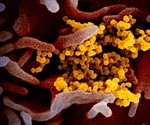
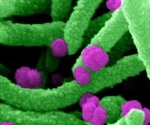
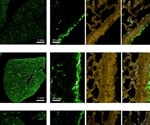
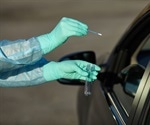
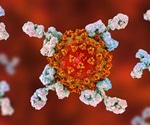
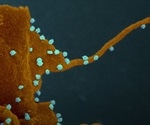
_b8a5c7a9fba240458c36bb35c47778e3-150x125.jpg)
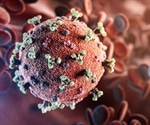

_84460a36aab9482587a8116859bbdf44-150x125.jpg)
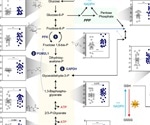


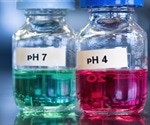


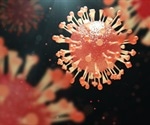
























.png)










No hay comentarios:
Publicar un comentario